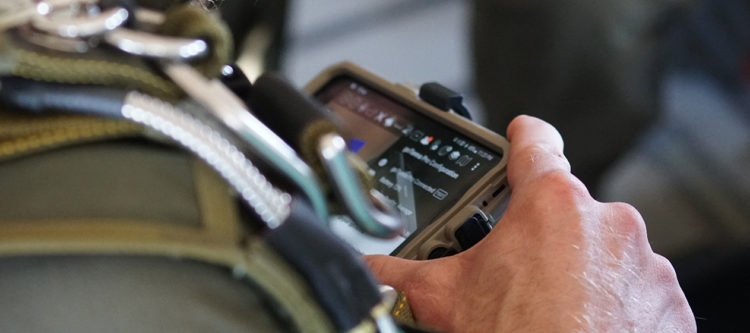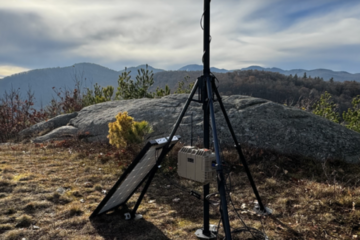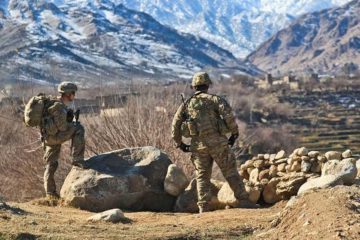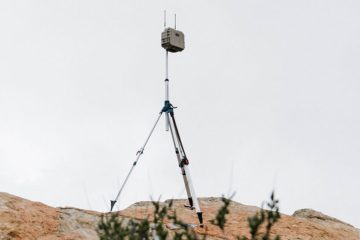4 key SOF military challenges

May 6, 2024, marks the official beginning of SOF Week, an annual event for the international Special Operations Forces (SOF) community. This conference and expo brings together global SOF leaders for networking, sharing of best practices, and professional development sessions. It’s also an opportunity for SOF leaders to meet with their industry counterparts to find opportunities to work together and learn about new technologies that can help special forces operators more effectively accomplish their missions.
When this article is published, these individuals will already be packing and traveling to Tampa, FL, where they’re eagerly anticipating a week of keynote speeches, panel discussions, and technology demonstrations. While they may not be explicitly laid out in the official agenda for this year’s event, there are four trends that I anticipate will loom large over every one of these sessions during SOF week. These four trends are effectively overarching issues influencing military acquisitions, priorities, and operations across the globe that will shape and influence every decision that the SOF community – and the larger military – will make for the foreseeable future.
Here are the four big trends I expect to hear repeatedly at SOF Week and why they’re important for today’s modern special forces elements.
 Interoperability with coalition partners
Interoperability with coalition partners
For years, the military has focused on Multi-Domain Operations (MDO), a buzzword for combining the capabilities and resources of all of the nation’s military services against the enemy.
However, as we’ve focused on emerging threats, we’ve realized that victory is only assured if we can work with our allied nations and coalition partners. The result has been a new focus on Joint All-Domain Operations (JADO), which incorporates all capabilities from across the U.S. Department of Defense (DoD) with the capabilities and resources of our coalition partners.
In the future, SOF missions may not be conducted with warfighters from a single nation but – rather – may begin to incorporate special forces operators from multiple allied nations and coalition forces.
For this to be possible, allied militaries with currently disparate technologies need the ability to communicate. They’ll also need a Common Operating Picture – shared situational awareness and a full, detailed picture of the battlespace that incorporates information and intelligence from all participating nations and militaries. Even before the mission, these organizations will need to collaborate – training together and ensuring the interoperability of their equipment, networks, and devices to ensure they’re prepared for the mission.
JADO creates a need for interoperability within the different services that comprise the U.S. DoD and between the DoD and its coalition partners. The need for interoperability is one of the reasons we’re so excited to demonstrate goTenna’s solutions at this year’s SOF Week. goTenna’s solutions make it quick and easy for special forces operators to quickly establish an ad-hoc, interoperable mobile mesh network that would enable communications and situational awareness for everyone involved in the mission.
The LPI and LPD challenge
As we discussed, the military has recently shifted its focus from the asymmetrical warfare it experienced during the War on Terror to potential conflict against much more capable near-peer adversaries. Unfortunately, these more sophisticated and technologically advanced adversaries can intercept and detect our military communications – possibly disclosing sensitive information and the location of our special forces.
Because modern adversaries have more advanced capabilities, the military is looking for new communications solutions that offer a low probability of intercept (LPI) and a low probability of detection (LPD).
This is another area where certain types of mobile mesh networking can benefit the military. As discussed in a previous article on The Last Mile, mobile mesh powered by our Aspen Grove Protocol transmits small amounts of information very quickly, making it much more difficult for adversaries to intercept or discover.
However, I strongly believe this is one area where tools and technology aren’t enough. Even with mobile mesh devices and other LPI and LPD communications technologies, unit TTPs—the way special forces operators use the solutions—are just as important as the technology inherent in the devices. For true LPI and LPD communications in theater, technology needs to be bolstered with training, which is another issue facing today’s SOF community.
Training on tech is tricky
Many of the skills that warfighters had in the past – skills designed to help them hide their signals among noise on the battlefield – atrophied during the asymmetrical warfare of the War on Terror. Today, modern warfighters and signals personnel simply don’t have the ability or skills to operate undetected.
Training is necessary to get special forces operators and communications personnel up to speed, but training on new technology is a challenge in today’s military. The first challenge comes from the pace of technological advancement. Since new solutions are constantly being innovated, it can be easy for the training curriculum to fall behind the current technology.
Of course, the Military’s recruitment and retention challenges bring further hurdles to force modernization. Rapidly training warfighters to field new personnel in the signals community requires schoolhouses that are up to speed with cutting-edge technology. Also, the military may not have the personnel necessary for detected communications or signals personnel.
In this environment, the military must embrace new technologies and solutions that are actually easy to use and operate with minimal training. This ease of use is even more critical since the individual using it may not be a dedicated, trained communications professional.
This is another area where goTenna’s mobile mesh networking solutions can pay dividends. The solutions are intended to be distributed to and utilized by even untrained tactical operators at the drop of a hat. goTenna’s mobile mesh networking devices are built to be deployed rapidly with minimal training. This fields a perfect solution for teams without dedicated signals personnel.
More requirements than dollars
The giant military budgets that helped finance the War on Terror are a thing of the past. Today’s military has dealt with year after year of continuing resolutions and tight budgets that have made it difficult to finance all of the disparate programs needed to meet the requirements of an evolving military facing modern threats.
Today’s military has more requirements than budget dollars to meet them. This means they need to identify new and innovative technologies – including those from entrepreneurial technology startups – that can meet their requirements at lower price points than solutions from traditional defense contractors. By identifying solutions from small, more agile technology providers, the military can acquire solutions that solve their problems and meet their needs at a fraction of the cost.
SOF week is an incredible opportunity for the SOF community to come together, network, and share best practices. This year’s event comes at the perfect time—with the SOF community facing these four overarching trends and challenges. We’re excited to be in Tampa for this incredible conference and eager to showcase the advanced mobile mesh networking solutions that can solve all four of these modern military problems.
If you’re attending SOF Week and are interested in a goTenna demo, click HERE.








No Comment